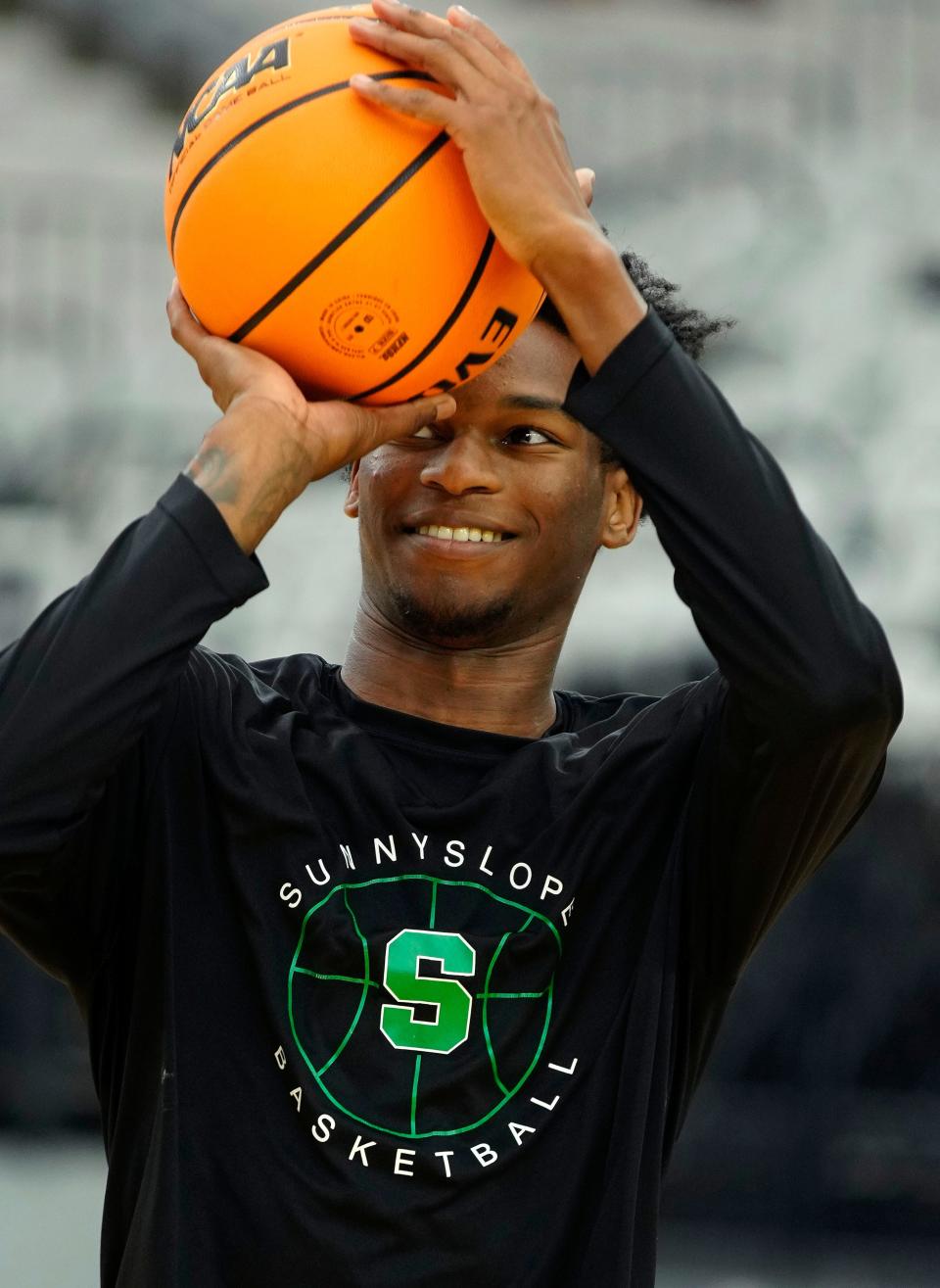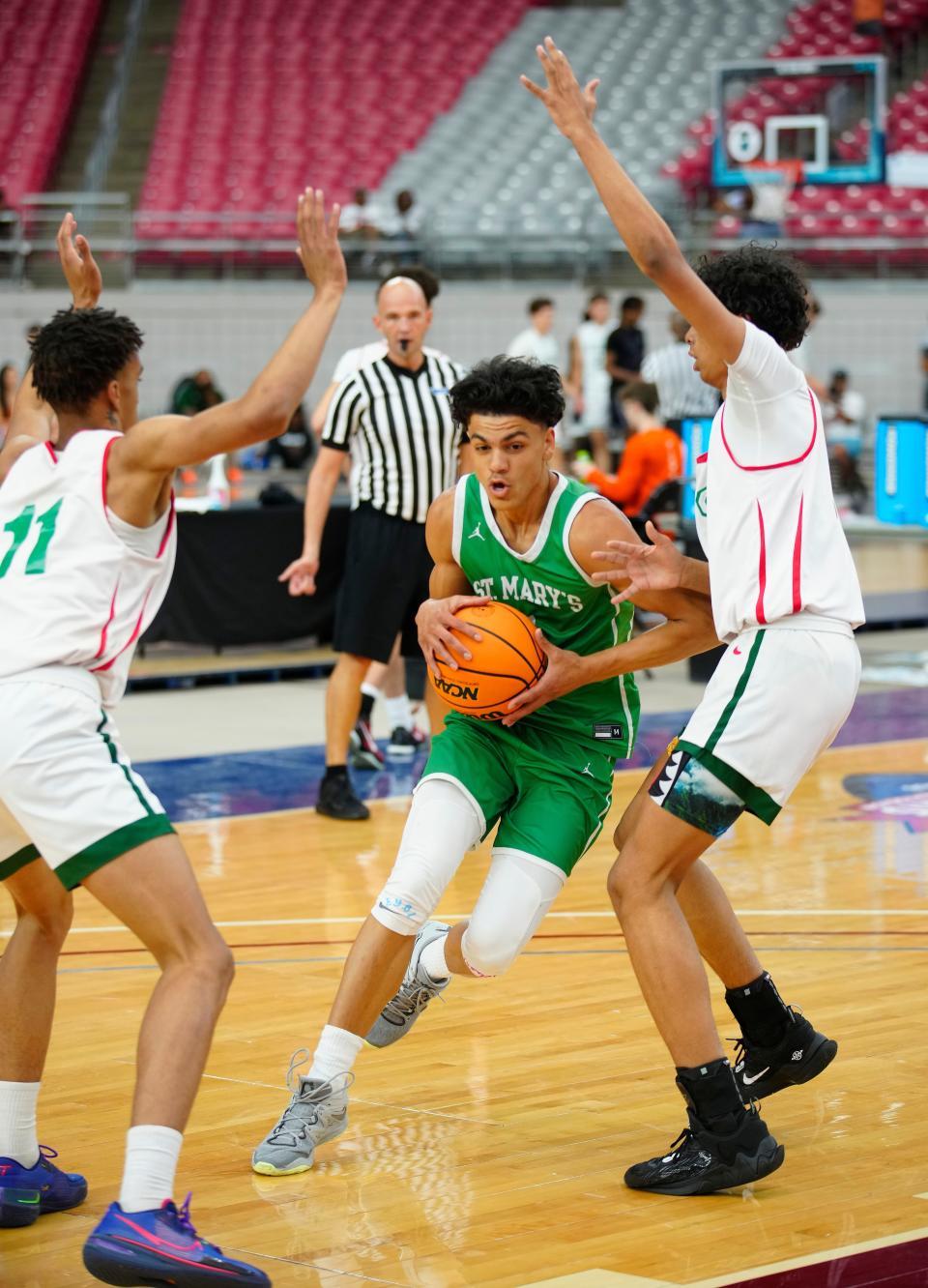
When high school senior athletes sign their national letters of intent Wednesday, there will be three Arizona Interscholastic Association boys basketball players expected to sign.
They are Styles Phipps of St. Mary’s (Grand Canyon), Bradey Henige of Cactus (California Baptist) and Jai Anthoni Bearden of Sunnyslope (Ball State).
Despite the explosive growth of high school basketball in Arizona and the top talent that has come with that, it’s getting tougher for players to find college scholarships and the best fit after high school.
The big reason for that is the college transfer portal, which allows Division I college coaches looking to quickly rebuild their rosters the option of landing an older, more mature player with college experience who is looking for a new opportunity. That lessens the need to rebuild via new high school recruits.
Unless you’re someone like Koa Peat, Gilbert Perry’s 6-foot-8 five-star junior who looks destined for the NBA, it’s hard to figure on a major college or university coming after a high school player aggressively with a chance for them to make a big impact right away.
There is no rule that requires players who enter the college transfer portal to sit out a season, they can play right away at a new school. But it usually takes a year or so to grow into the college system, and there’s no guarantee a transferring player will make an impact, so there is constant turnover each year, which works against high school seniors.
“It is definitely different today for high school student-athletes in terms of getting a scholarship,” Mountain Pointe boys basketball coach Kaimarr Price said. “In simple terms, it is simply more competitive today because of the transfer portal and college coaches being able to recruit a 22-year-old with experience to help them win right away.

“This has opened players’ eyes to other routes, which is good. We have excellent NAIA (college) programs here in the state, a couple of good West Coast D-III conferences who recruit Arizona kids, and a competitive D-II conference on the West Coast also.”
The bottom line is that high school seniors aren’t just competing against other seniors for Division I colleges, they’re up against transferring college players who are filling roster spots that, in the past, would have been available to an incoming freshman.
“This is the reality, which needs to be understood by players and parents,” Price said. “Yesterday’s D-I high school kid is not today’s D-I high school kid. That is not a negative, as many levels can provide them with a great experience.
“I played at the JUCO, NAIA, and NCAA Division I levels, and also coached at the NAIA level. There are players and teams that are very good at every level.”
Jordan Grafsgaard, who leads Heritage Academy Laveen’s boys basketball program, didn’t have Division I opportunities to continue playing basketball out of high school in 2004. But he gained experience and fulfillment playing four years of Division II basketball at Minnesota-Crookston. It led to his coaching career that included one season as a student assistant at Southwest Minnesota State.
He understands how hard it is to get a scholarship.
“I think there is still a lot of potential out there for high school players to find a home in college,” he said. “Any level of college ball, from NAIA all the way up to D-I, is impressive to make it to as a high school player.
“I think the stat is somewhere around 7% of high school kids play college ball at any of those levels combined so to make it is amazing. We as coaches need to make it clear to our players that it’s not D-I or bust as lower-level college basketball is still very hard and high quality.”
Peoria Centennial basketball coach Tarik James, taking over the program this year, says basketball is basketball, no matter how big or small it is. It’s still an opportunity to play. And that’s what anybody wants.
“Yes, the transfer portal hurts kids but they could also use that to their advantage,” James said. “They could go to a smaller school, and, like I tell them, prove themselves. They could have that opportunity to move up or to what they think is a better fit and opportunity. I’m huge on the education part and the chance to have that paid for is important. It’s not just about the playing. It’s about the reality of what their future looks like after playing.
“I try to be as honest as possible when it comes to this. I have players who I feel should have looks or more looks. It’s hard to keep their motivation and confidence up. They all think they should be D-I. That’s why I talk about them using the transfer portal as an opportunity. Whether it’s going from an NAIA to a D-II or higher.”
To suggest human-interest story ideas and other news, reach Obert [email protected] or 602-316-8827. Follow him on X, formerly Twitter:@azc_obert
This article originally appeared on Arizona Republic: college transfer portal is impacting Arizona high school basketball recruits







